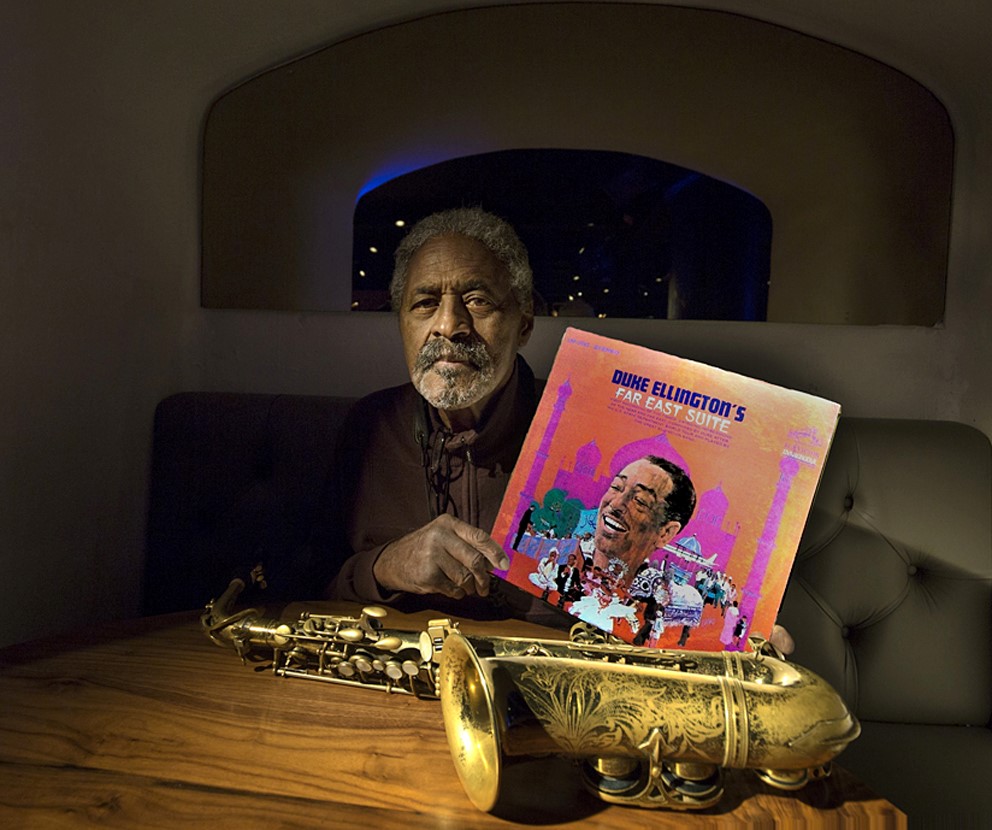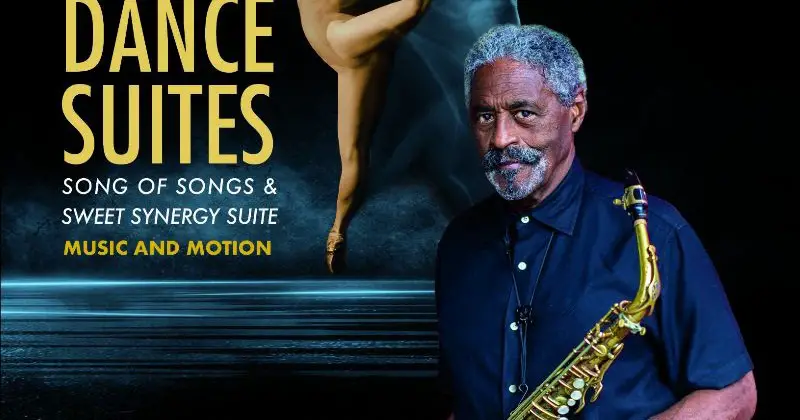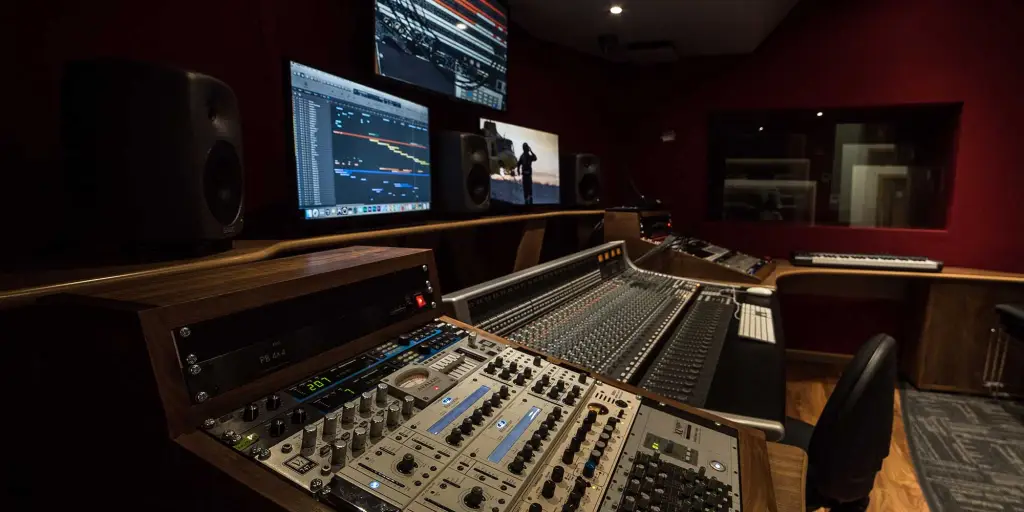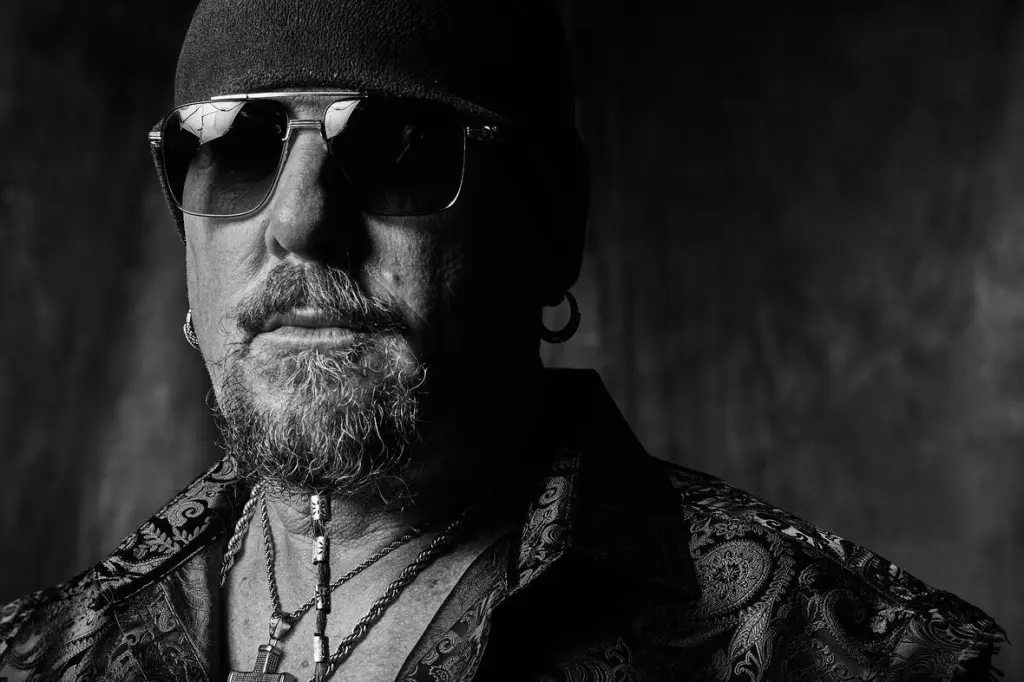All images courtesy of Charles and Lynn McPherson

I love Jazz. Over the last few years, I’ve really dug my heels into the genre. As I’ve dug in, I’ve climbed the proverbial “family tree” of the genre, and when I reached the Charles Mingus branch, I found Charles McPherson, one of the best Jazz sax players that you will ever have the pleasure of hearing.
So, to say I am elated to present this one to you all would be an understatement. It’s not every day that we get to speak with one of the most celebrated players in any given genre, let alone Jazz, a genre that has steadily challenged my lifelong devotion to Rock.
Charles is an accomplished band leader, with at least 27 solo albums under his belt. Since the 1960s, he’s worked alongside the likes of Charles Mingus, Sam Jones, Sonny Stitt, Toshiko Akiyoshi, Art Farmer, and many, many more. Charles McPherson is one of the go-to players in Jazz, and he’s spent more than half a century atop the heap, creating art that will be remembered within the annals of music history forever.
At 81 years young, Charles is vibrant and he’s creating more than ever. He’s got a new album out, which is called Jazz Dance Suites. You can head to charlesmcpherson.com to grab a copy. In the meantime, enjoy getting to know and learning about a true giant of Jazz. I know I did. Lastly, I would like to pay a special thanks to Charles’s wife, Lynn, for assisting in making this interview happen. Her kindness and accommodating nature during times like we find ourselves in is not only truly and greatly appreciated but also a rare thing. Cheers.
Andrew:
Charles, thank you for taking the time to speak with us. It’s been a weird year, hasn’t it? What have you been doing to pass the time?
Charles:
It’s good to be here – thank you. Yes, a strange year for all of us. I had many performances canceled — some postponed, but a few may never come back. A tour for my new recording was scheduled – all gone. Since I’m home all the time, I’ve been practicing more than ever – hours every day. I’ve been writing a little, doing a lot of online interviews, teaching, master classes, and performances too. Different, but keeping me inspired and moving forward. Talked to a lot of fellow musicians that I may not have connected with quite like this – so making the best use of my time. I’ve also been eating well, staying in shape, and helping my wife with the release of Jazz Dance Suites.
Andrew:
Tell us a bit about your backstory. How did you get into music? What was the gateway so to speak?
Charles:
I knew I wanted to do that in junior high school so I must’ve been 13 or 14. I started playing in the band, out on trumpet first – trumpet and flugelhorn because the band did not have a saxophone, but I wanted to play saxophone if I could have. In those days, believe it or not, the schools actually had instruments. And at 13-14, I knew I wanted to play. I knew I wanted to do it.
It’s weird what draws people to things. It was really the sound of the saxophone; I really liked it even as a little kid. I liked the sound of it and plus the shape of it, too, for whatever reason. I happened to live in a neighborhood in Detroit where a very good jazz club was right down the street. When I found out that the kind of jazz I liked was featured at this club down the street, that was it. It was like being in heaven or something. I would just go stand outside and listen to the musicians. And the musicians in the house band at this club I’m talking about, here’s who it was:
Elvin Jones on drums
Barry Harris on piano
Pepper Adams on baritone sax
Paul Chambers on bass
That was the house band! And then I started going down and just listening to these guys and that was it. I knew I wanted to do that.
Andrew:
As an artist and saxophonist, who were some of your earliest and more important influences?
Charles:
Johnny Hodges, Charlie Parker, Bud Powell, — that’s it, really early on. Later, many more.

Andrew:
You worked heavily with Charles Mingus. How did you get started with him? What was it like working with him over the years?
Charles:
I came to NY in 1960. I started working with Charlie Mingus. That was the first real working band that traveled. He was different than Detroit guys but he did have this: he wrote poetry, he painted, he had a worldview, and he was totally into music. These people were bigger than life. They were just characters – they were really something. That generation.
I stayed a long time with Mingus – about 12 years. Drove me completely nuts! I quit for about a year, and worked for the Internal Revenue because I had kids. I was like, “Man, Mingus, I can’t.” He was a great musician but…gone…you know? I told myself I have to get away from Mingus. So, I went to the Internal Revenue and I worked on the 1040s. That was weirder than Mingus. I can’t go through with this but I did it for about a year.
It was interesting – I saw a lot of returns. I remember seeing John Coltrane’s return one year. This guy was making $100,000. That was amazing because it was in the sixties. A jazz tenor player and this was during his tour of My Favorite Things with the soprano and Greensleeves. I actually did his return – I saw it! I thought a tenor player playing jazz, making $100,000 in 1964 or whatever was pretty impressive.
I stopped working with Mingus around 1972. But I did do a record date with him in ‘78 – I think that was Mingus’s last record. Mingus had what they called Lou Gehrig’s disease. It’s a horrible disease. It’s a disease that affects the muscles; the nerves in the muscles.
So, this is 1978 and it was his last record date. Joni Mitchell had something to do with this record. Her money was involved. She had something to do with it because she was there. Everybody was in this big band: Michael Brecker, Randy Brecker, Me, Lee Konitz, Larry Curry, George Coleman, just everybody. We played and Mingus was sitting in a wheelchair. He could barely move and barely talk. I remember he said, “I would kill myself if I could pick up a pill.” You can’t move – you’re just this *motions to a himself sitting in a chair*. Anyway, so that was the last record date in 1978. The very next day I left New York and moved to California. Mingus, I think he eventually went to Mexico for his alternative treatments. I think he died in Mexico and it was pretty tragic. For me, it was going to California. My mom lived in California in La Joalla which is San Diego. I’m an only child so I started to get concerned about her. She’s getting older and I’m starting to get worried about her. So I went just to come hang out with her and ended up staying. So that’s 1978.
Andrew:
In addition to your work as a side man, you’ve released more than 23 albums as a leader. Looking back, in your opinion, what are some of your finest moments as a solo artist?
Charles:
25 at least, as a leader. There are a few European and Japanese labels that were never released here in the states. Funny you should ask because now that I’ve had time, I’ve listened to myself as a young player–never did that before. I really like the entire CD of Come Play With Me – Arabesque. I like Manhattan Nocturne too. Farther back – From This Moment On. There are more from different times; It’s been a long career – at times I’m pleasantly surprised when I hear my “young self.”
Andrew:
You’ve got a new album out, Jazz Dance Suites. Tell us more about the album. What was your inspiration while recording it? Where can we get the album?
Charles:
All the music on Jazz Dance Suites was commissioned by San Diego Ballet over a period of 5 years. I’ve written three full suites for them, of which two complete ones are on this album and two “medleys” of other’s music – Parker and Gershwin – not on the recording. I’ve played a lot of these tunes at gigs, and they’ve always been very well-received, so we recorded ‘Song of Songs,’ ‘Sweet Synergy Suite’ & ‘Reflection on an Election’ (a small segment from a chamber piece I wrote that works well at gigs) at Van Gelder Studio in December 2019. ‘Song of Songs’ an eight-movement suite, holds together both thematically and tells a story of unrequited love through poetry from the Ancient Hebrew Scripture, Song of Solomon. Great project – extremely inspiring to write this way, and was much different for me. ‘Sweet Synergy Suite’was my first attempt writing for the company, and it’s a six-movement work all Afro-Latin-Cuban-inspired, plus some bebop, of course! ‘Reflection on an Election’ is my response to the 2016 election – and need I say more, played here with just piano and drums, but originally written for cello, violin, sax & bass in a three-movement suite called ‘Reflection, Turmoil & Hope.’ Essentially, composing like this – less improvisation, and longer forms, was unique for me, and the album is quite a bit different than anything I’ve ever done. The inspiration comes from my daughter-dancer, Camille, who is in her 9th season as a soloist with the company. Also, watching their artistic director Javier Velasco, work with all genres of music — was quite inspiring too. Art inspires Art, and watching a lot of dance because of Camille’s path has been enriching and inspiring all along the journey. Great musicians on the album: Terell Stafford-trumpet, Lorraine Theresa (Castellanos)-voice, Randy Porter and Jeb Patton-piano, Billy Drummond-drums, Yotam Silberstein-guitar, and David Wong-bass. All great players interpret the music masterfully. The sound at Van Gelder’s and the work by Maureen Sickler is perfect – she trained under Rudy Van Gelder. You can get the album on my site: www.charlesmcpherson.com (best) or Amazon, Bandcamp.com — all links are on my site.

Andrew:
You’ve been at it a long time, and you’re still creating and performing. What’s changed for you compared to your early days? Are you a better player now than ever?
Charles:
I like to think that I’m better now! In my estimation, the improvement manifests in a deeper understanding of harmony, and its usages. My technique may be better. I feel more comfortable taking chances. I know the reason for a particular note at a particular time. I love to play just as much as ever.
Andrew:
Let’s talk about the state of music, in general, a bit. In your opinion, what’s the state of the music industry these days? What are some things that need to change?
Charles:
This could be an essay, but I’ll leave you with this: Jazz resonates with enough people to always be part of the music in this world. However, I’m not sure if it will ever be a popular form, especially in the U.S., where it was born. Jazz makes it in spite of America, not because of America. A change can occur with all art forms if young people are educated and exposed to high-quality art, in any genre.
Andrew:
In the world we live in today, we are more or less dominated by the never-ending barrage of social media. How has this affected music as an art form? Is an artist’s ability to get their music out there hindered by all this, or helped?
Charles:
For musicians like me that never really attempted to be “commercial,” probably helped, but one has to have the means to do it – and I mean both financial help, and technical support. My wife, Lynn has turned into a marketing social media crazed person, and without having someone like that working and pushing for you, it would be tough. If an artist has something to say, and someone behind them, because of the ways to bypass big companies, and audiences yearning for great art, maybe this “world we live in today” have made it easier? Great art has never been easy though. Never.

Andrew:
Who are a few artists, past or present that mean a lot to you?
Charles:
Mingus, of course. Prokofieff, Bartok, Bach, Duke Ellington, Louis Armstrong. The young musicians on Jazz Dance Suites were hand-picked, and mean a lot to me now.
Andrew:
Aside from music, what else are you most passionate about and why? How do your other passions inform and inspire your music?
Charles:
Astrophysics, is the understanding, and workings of the universe and being. Understanding the meanings of being human, and how that fits in with the universe and creation. I think about these things all the time!
Andrew:
Are you into vinyl? Tapes? CDs? Or are you all digital now? Where do you like to shop for music?
Charles:
I still play a lot of my vinyl records. Tapes – have some, but nothing to play them on. CDs–yes, mostly CDs. Digital a bit. I shop online, and I listen to YouTube often to find out what I want to purchase.
Andrew:
What’s next for you once COVID-19 is done with us? New album? A tour?
Charles:
Performing – the delayed tour, and several projects in mind. We’re being considered for a documentary film coming up, another ballet in the works, one that was canceled, thinking about a score with just voices. My hometown is honoring me in July – back to Europe as soon as possible. Reaching out to dance companies – everyone wants to SEE Jazz Dance Suites! Much more to do; I’m only 81! And simple things, like being able to go out for dinner. We all look forward to the pandemic coming to an end.
Andrew:
Last question. In a world that’s been so confined by the constraints of capitalism, big business and the alienation caused due to the internet age, how do artists find their footing these days? What advice would you have for younger artists?
Charles:
You’ve asked a complicated question. Often I ASK young artists how they’re finding their footing. In any era, an artist is supposed to do what’s in their heart and mind and not think of anything else besides expressing themselves in an honest way. But artists here have to support themselves, which involves the machinery of capitalism. Therein lies the complication. My advice is to be as creative and true to one’s self as possible, but keep in mind the ear of the listener. That’s when balance can be attained no matter what age we’re living in.

Interested in learning more about the artistry of Charles McPherson? Check out the link below:
Be sure to check out the full archives of VWMusic Interviews, by Andrew Daly, here: www.vwmusicrocks.com/interview





Leave a Reply